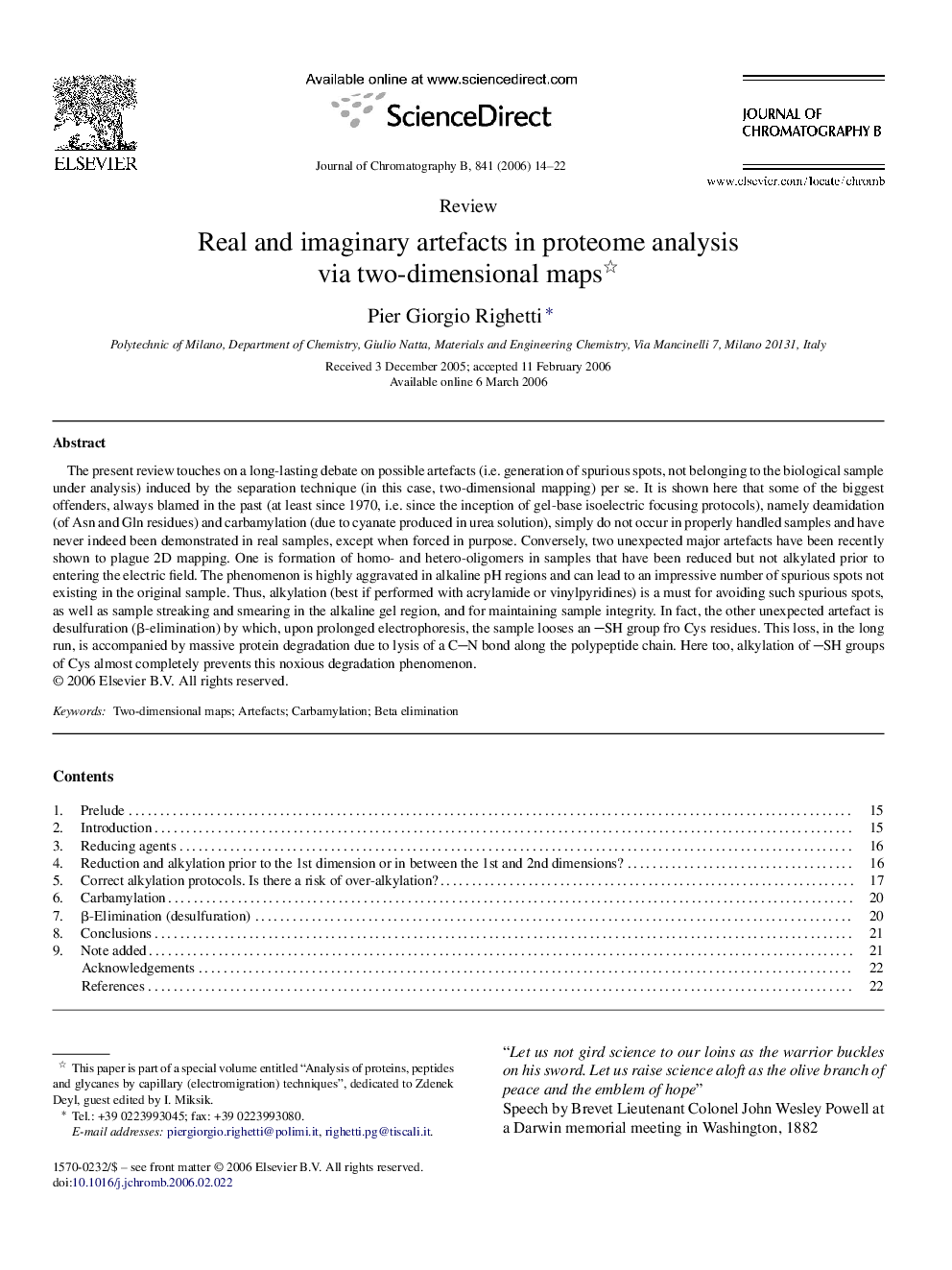| Article ID | Journal | Published Year | Pages | File Type |
|---|---|---|---|---|
| 1215909 | Journal of Chromatography B | 2006 | 9 Pages |
The present review touches on a long-lasting debate on possible artefacts (i.e. generation of spurious spots, not belonging to the biological sample under analysis) induced by the separation technique (in this case, two-dimensional mapping) per se. It is shown here that some of the biggest offenders, always blamed in the past (at least since 1970, i.e. since the inception of gel-base isoelectric focusing protocols), namely deamidation (of Asn and Gln residues) and carbamylation (due to cyanate produced in urea solution), simply do not occur in properly handled samples and have never indeed been demonstrated in real samples, except when forced in purpose. Conversely, two unexpected major artefacts have been recently shown to plague 2D mapping. One is formation of homo- and hetero-oligomers in samples that have been reduced but not alkylated prior to entering the electric field. The phenomenon is highly aggravated in alkaline pH regions and can lead to an impressive number of spurious spots not existing in the original sample. Thus, alkylation (best if performed with acrylamide or vinylpyridines) is a must for avoiding such spurious spots, as well as sample streaking and smearing in the alkaline gel region, and for maintaining sample integrity. In fact, the other unexpected artefact is desulfuration (β-elimination) by which, upon prolonged electrophoresis, the sample looses an SH group fro Cys residues. This loss, in the long run, is accompanied by massive protein degradation due to lysis of a CN bond along the polypeptide chain. Here too, alkylation of SH groups of Cys almost completely prevents this noxious degradation phenomenon.
